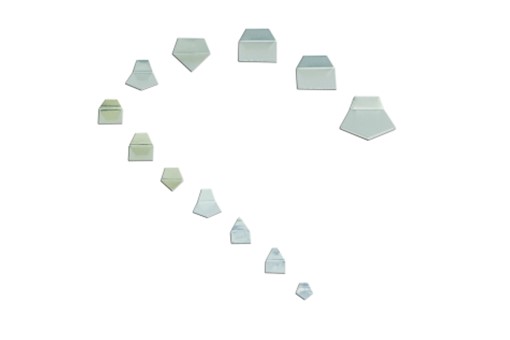What weeds for chickens will save you money on feed and top dressing

Learning, remembering and using beneficial weeds for chickens is quite simple. The main thing is to collect organic weeds that have not been treated with pesticides and have not been contaminated with other substances hazardous to bird HEALTH, such as lead or heavy metal salts when growing along busy roadsides.
it is easier to create your own weed-chicken garden, collect seeds for harvesting and mow in time. Mowing is carried out sequentially by squares to create a green conveyor of delicate greenery. Most weeds are fed to chickens in the young plant stage and fresh - this makes it easier for the birds to digest. With a margin, you can mow as much as is enough for two or three days to add to the diet.
Dandelions for chickens
Many scientific works have been written about the benefits of dandelions for chickens, of which the following can be briefly noted.
Dandelion greens are rich in nutrients such as vitamins A, C, and K, as well as calcium, iron, and potassium. The bitter properties of dandelion greens can stimulate the production of digestive juices, making other foods more digestible. Moreover, it is one of the first weeds to appear in early spring and one of the last to end the season.
Chickens love the whole plant: leaves, stem, flowers and roots. In spring and summer, they give the aerial part, in the fall they dig up protein-rich roots, they are useful to chickens during molting by winter.
Collecting dandelion seeds will allow you to drive out greens in winter. Collect seeds from the heads of existing plants after they turn into a fluffy ball. Then the seed bag should be hung in a cool place in the barn, and forcing is done in a long container chute placed under the window and filled with simple soil. Considering that dandelion seeds need light to germinate, you do not need to completely immerse the seeds in the soil - scatter in a row and lightly press in without deepening. With constant humidity, seedlings will appear in two weeks. Let them grow a little more, and then the plants can be dug up, simply by turning the chute over, and given to the chickens whole.
Nettle for chickens
Everyone knows the common stinging nettle. This is another hardy perennial that emerges in early spring and ranks among the top "chicken weeds". Nettle is a supplier of protein, vitamins and minerals. Leaves, stalks of nettles are given to chickens fresh, dried, boiled or fermented in moderation, as overfeeding can cause indigestion. Mix nettle in a ratio of no more than 10% of the diet.
As the summer heat approaches, nettles begin to bloom. The plants open their tiny, tassel-like flowers, and then the nettles, as long as you haven't cut them, become dotted with clusters of seeds.
Nettle Seeds are a nutritional, energy and vitality booster, a real chicken superfood. The seeds contain the same nutrients as spring shoots, they are rich in minerals such as iron, calcium, magnesium and silicon, plus they contain fatty acids and vitamin E, which are not found in the leaves. For fun, you can try it yourself, they are delicious!
For feeding chickens, it is advisable to harvest nettle seeds in the immature green stage by cutting the plants and hanging them on a crossbar over an old sheet. After drying, rub the seed clusters through a sieve, separate the seeds and store in an airtight container away from direct light.
woodlouse hens
In this case, we are not talking about an ancient crustacean, but about a garden weed - common chickweed. Chickens love this plant, especially chickens. Chickweed, true to its nickname, loves damp and damp soil, and is easily recognizable by its plentiful small, heart-shaped leaves, which are more numerous at the top than at the bottom of the plant.
In the spring, the chickweeds develop tiny white rosettes of five petals, just in time to give them to the smallest chicks. The flowers of woodlice have a high concentration of potassium, a mineral without which chickens cannot develop well. There is potassium in the leaves, and in addition to it - vitamins A and C, a large amount of gamma-linoleic acid, better known as omega-6.
Omega-6, along with omega-3, not only provides essential fatty acids for the health of chickens, but also enhances the nutritional value of their eggs.
Tender chickweed, unlike nettles, does not need to be cut, boiled or fermented.
Quinoa for chickens
Quinoa (Chenopodium album) is a legendary plant in terms of nutritional qualities, although agronomists classify white gauze as a malicious weed. Therefore, if you went to the field for a quinoa, then there is a high risk that pesticides were used there, keep this in mind.
Quinoa is an upright annual plant with dull blue-green leaves tinged with white underneath. The margins of the young leaf are serrated or "toothed", but not as sharply defined as those of nettles. As the leaf ages, the serration disappears and the edge of the leaf becomes smooth.
If you look closely at the leaves, you will see a waxy substance that makes the leaves appear silvery.
Quinoa belongs to amaranth, leaves and seeds are edible. It has long been used in agriculture for feeding various animals, including chickens. This plant has a lot of vitamin A and phosphorus, which is crucial for the egg-laying process, there is potassium, protein, iron, trace elements and fiber, omega-3.
Quinoa leaves, if you are going to give on an ongoing basis, it is better to steam, as they contain oxalic acid. Quinoa seeds are harvested both for nutritional feeding and for forcing greens.
Is it possible to give chickens clover
On the one hand, perennial red or white clover is rich in calcium, niacin, potassium, vitamins A and B, iron, and protein. Clover is a detoxifier and promotes liver and digestive health.
On the other hand, clover is considered an anticoagulant in folk medicine and is used to lower blood pressure in humans. And therein lies the reason why clover often appears on lists of what not to feed chickens.
Clover contains coumarin, which thins the blood. So while it helps improve circulation and lower blood pressure, in stale clover, the presence of certain fungi causes coumarin to be converted into a toxin that can cause internal bleeding. It's more of a problem with cut clover lying in a pile, getting wet and spoiling.
In small quantities, fresh clover will not harm chickens, it is recommended for good egg production, "clover eggs" are nutritious, with a bright yolk.
Read together with it:
- Austria will approve sanctions against Russia, which it delayed due to Raiffeisen.Austria has announced its support for the sanctions package against RUSSIA. it previously demanded that sanctions against Rasperia be lifted in order to compensate Raiffeisen Bank International for the €2 billion it was forced to pay by a Russian COURT ruling.Austria has decided not to block the adoption of a new package of EU sanctions against Russia, although it had previously made demands regar...
- A man stole a donation box from a church in the Mogilev district.Screenshot from a video released by the Mogilev Regional Executive Committee Department of Internal Affairs on October 14, MINSK . Representatives of a church located in the agro-town of Dashkovka, Mogilev District, contacted the Mogilev Regional Department of Internal Affairs (DIA) to report the loss of a box containing parishioners' donations and a coin box totaling over Br2,......
- Up to 19 tons of waste per day! We explain how utility workers from the State Enterprise "Spetskommunavtotrans" keep the capital's courtyards tidy.Every day, early in the morning, garbage truck drivers HEAD out to do their difficult but important job. They complete it promptly, precisely, and on schedule to ensure order always reigns in Minsk's residential areas. A correspondent for the newspaper "7 Days" joined waste collectors from the state-owned enterprise "Spetskommunavtotrans" to find out how difficult their job is and what situations ...
- RBI asked for sanctions relief against Rasperia to unblock Strabag sharesRasperia has been under sanctions since 2024. If the sanctions are lifted, RBI will receive Rasperia's stake in Strabag. A Russian COURT previously ordered RBI's subsidiary to pay $2 billion in damages.Raiffeisen Bank International (RBI) has asked the European Union to lift sanctions against Rasperia Trading, reportsBLOOMBERG, citing RBI HEAD Johan Strobl. If the EU makes such a decision, Raiffeis...
- Not like in the movies: how much do cash collectors' bags weigh and what do they find in ATMs?Topic News : How are ATM cash collections performed and how much do cash bags weigh? Vasily Agarelik, senior cash collector in the Collection and Transportation Department of MINSK Regional Administration No. 1, shared this and more in the "Honest Story" project. " As an operator, I am responsible for ATM cash collection. I work with a team leader, who is primarily responsible for security and, of...
- First in the Central Region. We learned what kind of grain loaf was harvested this season at Gastellovskoye OJSC.This year, farmers in the MINSK region harvested a substantial 2.2 million tons of grain, including rapeseed, despite all the unexpected weather conditions. Gastellovskoye OJSC took first place in the 2025 harvest in the central region. The newspaper "7 Dney" found out how the farm achieves such outstanding results. Painstaking work , technology, and discipline. The success of the harvest campaign...
- "Cardboard Superpower." What is Poland prepared to take into 2026?Photo: Unsplash The Polish government has submitted its draft 2026 budget to the Sejm. In short, the hole in the Polish budget is growing even wider, and the national debt is on the verge of skyrocketing. Meanwhile, military spending is breaking records, cementing Poland's status as NATO's leader in defense spending as a percentage of GDP. However, the value of such leadership is questionable. Or ...
- About beshbarmak, money, meat, traditions, genetics, and breedingPIONERPRODUKT.by continues its interview series with the prominent Kazakhstani scientist Dastanbek Asylbekovich Baimukanov , recorded by his younger brother, Syzdyk Asylbekovich Baimukanov. The first part of the interview is titled: "A Story of Shepherds, Sheep, and Freedom ." We remind you that numerous articles on animal husbandry by Dastanbek Asylbekovich Baimukanov have been published on our p...
- The prosecutor's office intervened after workers in the agricultural sector in the Mogilev district were subject to unjustified deductions.Photo from the Prosecutor General's Office, September 16, Mogilev. The Mogilev District Prosecutor's Office uncovered labor rights violations among workers at several agricultural enterprises. Following the inspection, four protests were filed with managers, and the money was returned in full, the Mogilev Region Prosecutor's Office information service told BELTA. During oversight activities at agr...
- Trump addresses NATO countries on sanctions against RussiaThe US will impose 'serious sanctions' on RUSSIA if other NATO members do the same, Trump said. NATO countries should also impose 50-100% tariffs on CHINA and refuse Russian oil , US President Donald Trump demands US President Donald Trump said he is ready to impose serious sanctions against Russia if all NATO countries agree, follow the US example and stop buying Russianoil . He expressed his pos...




























































